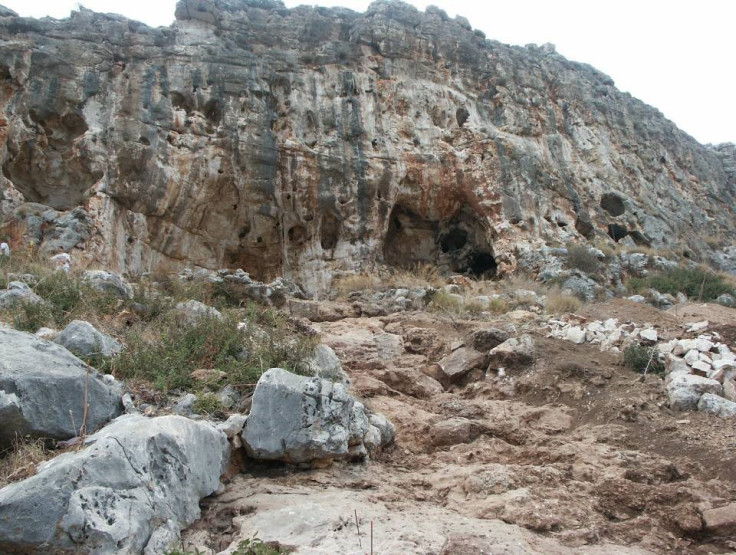Oldest human fossil found in Israel rewrites history of modern human migration from Africa
Findings suggest modern humans left the continent at least 50,000 years earlier than previously thought.

The oldest human fossil ever found outside Africa has revealed that human beings left the continent 50,000 years earlier than previously thought. The specimens were discovered in Misliya, Israel, with the help of primitive tools nearby.
Older fossils of anatomically modern humans have been found in Africa, such as the Jebel Irhoud which were discovered in Morocco and are 300,000 years old. But the Misliya find sheds new light on the history of human migrations.
Up until now, experts thought the migration from Africa to other continents occurred between 120,000 to 90,000 years ago, based on human fossils found at the Levantine sites of Skhul and Qafzeh, in Israel.
Several dating techniques were used to determine the Misliya fossil's age and found it was between 175,000 and 200,000 years old, which means our ancestors started their modern migration from Africa to other continents about 50,000 years sooner than was previously assumed.
Uncovering and analysing the fossil took a combined international effort, led by Israel Hershkovitz from Tel Aviv University and anthropology professor Rolf Quam from Binghamton University in the US. Their findings are published in Science Magazine.
In order to determine how old the fossil was, the research team used Micro computed tomography (microCT scans) and virtual 3D renderings and compared it to similar fossils found in Europe, Asia and Africa.
The newly discovered fossil consists of an upper jawbone as well as several teeth and was found at Misliya Cave, on Mount Carmel in Israel. It belongs to a homo sapiens species. Tools using the Levallois technique [a distinct type of stone knapping used in the Palaeolithic period] were also found near the site. The research team believes the emergence of the Levallois technique in the Levant is closely linked to the arrival of homo sapiens in the region.
Mixing up with Neanderthals

The inhabitants of Misliya hunted large game, knew how to make a fire using the Levallois tools.
However, while these fossil resembled modern humans, some of their features could also be found in Neanderthals and other humans.
"Modern humans were potentially meeting and interacting during a longer period of time with other archaic human groups, providing more opportunity for cultural and biological exchanges," said Quam.
The Middle East was a common passage for human migration during the Pleistocene Epoch - commonly called the last Ice Age - which lasted from 2,588,000 to 11,700 years ago. It was occupied at different times by modern humans and Neanderthals.
"One of the challenges in this study was identifying features in Misliya that are found only in modern humans. These are the features that provide the clearest signal of what species the Misliya fossil represents," he added.
The findings of Misliya shed new light on the migration of modern humans across the world. The study notes that recent discoveries in Asia have pushed back the date of modern humans' appearance in the region and as a result, backdating their migration from Africa as well.
Binghamton University put together a video retracing the history of the findings alongside an analysis. You can watch it below:






















